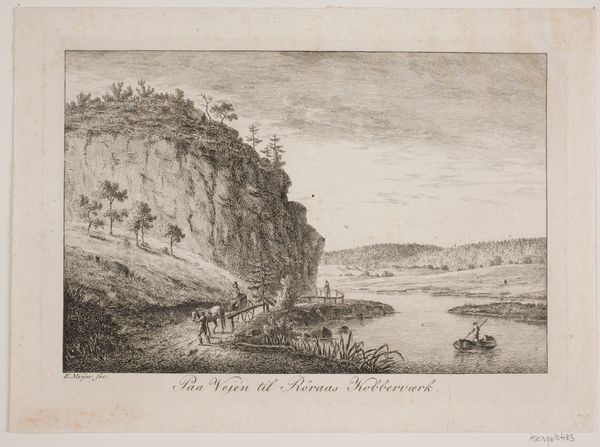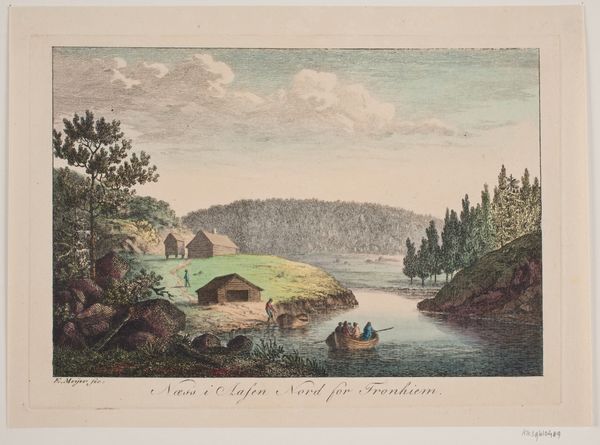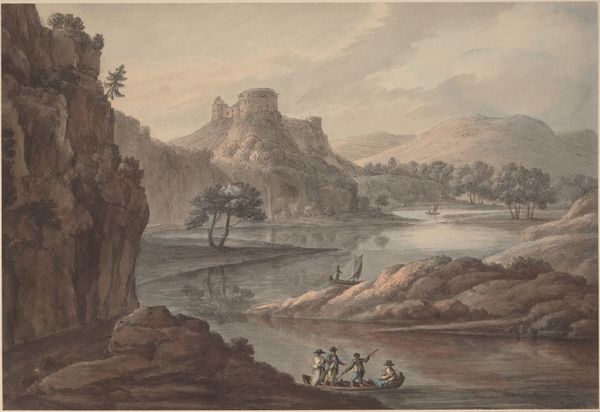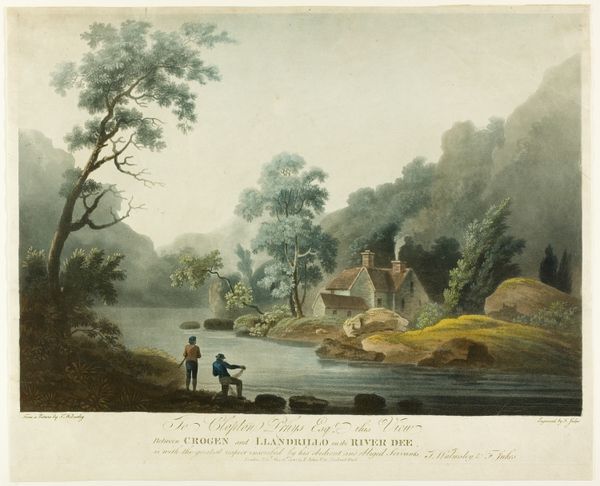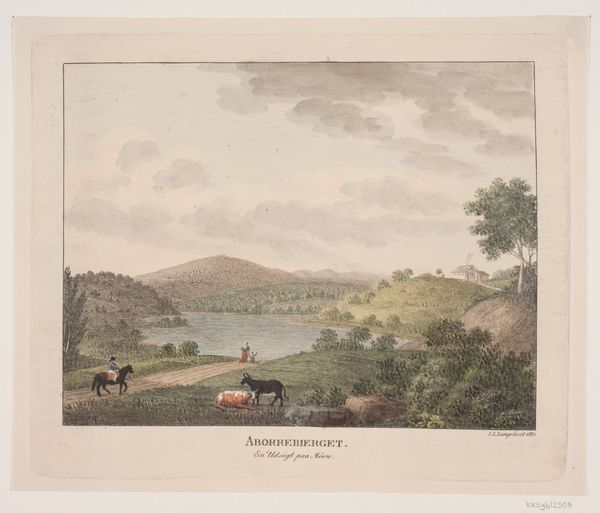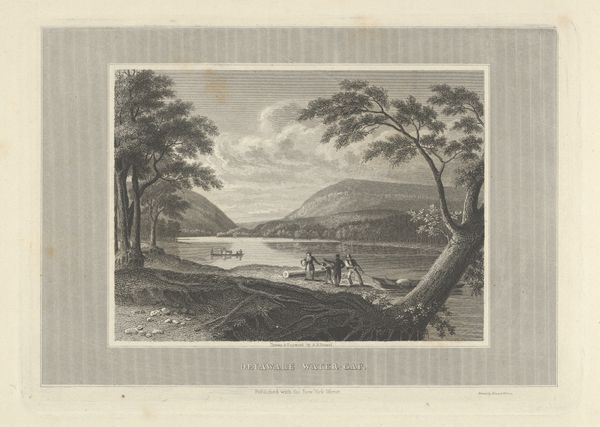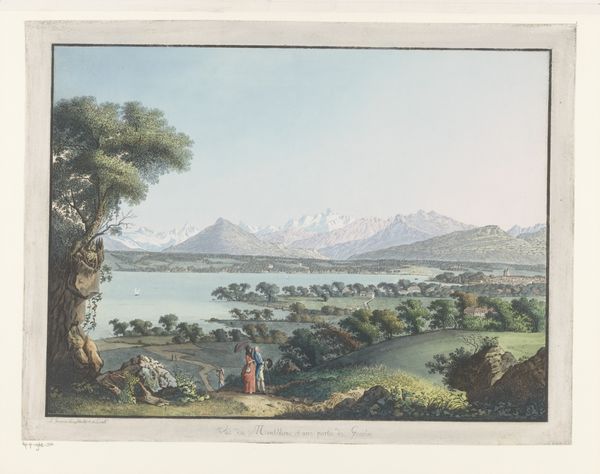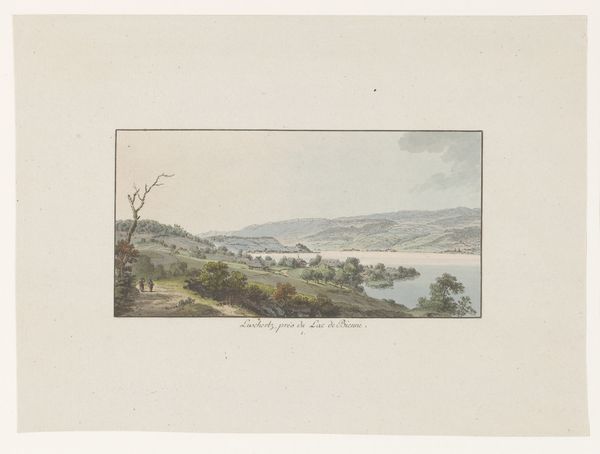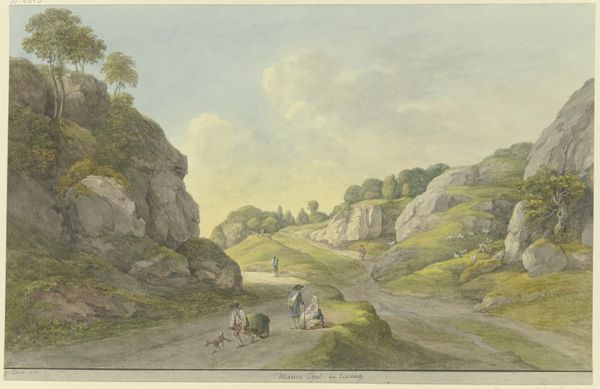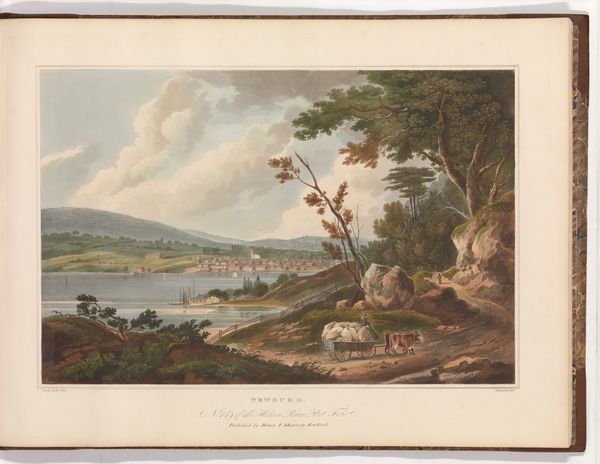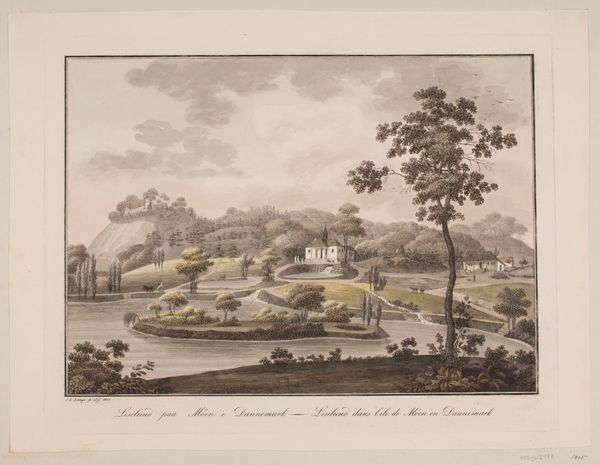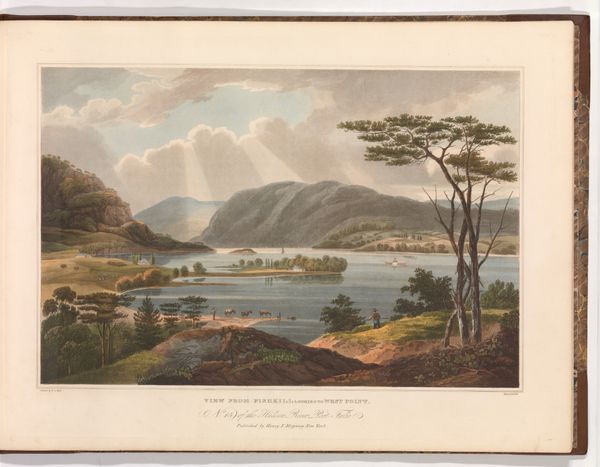
print, watercolor, engraving
#
water colours
#
ink painting
# print
#
landscape
#
watercolor
#
genre-painting
#
engraving
#
watercolor
Dimensions: 145 mm (height) x 207 mm (width) (plademaal)
Curator: Looking at this artwork, I immediately think of idyllic travel posters, although something feels muted about the scene. Editor: It's interesting you say that. This print, titled "On the Way to the Røraas Copperworks" by Elias Meyer, made sometime between 1763 and 1809, utilizes watercolor and engraving. That subdued palette certainly creates a distinctive mood. It also hints at the laborious extraction and manufacturing practices related to copper. Curator: I am struck by the depiction of labor within this picturesque landscape. See the figures walking with their horse, presumably transporting supplies, and the lone oarsman in the water. How might we consider their roles within this system of copper production and extraction? Editor: Precisely! This seemingly tranquil journey hints at complex economic realities. Meyer likely aimed to capture a scene representative of the copperworks’ operations, focusing on both the site's beauty and industrial relevance to underscore Denmark-Norway's resource wealth. Curator: Right, because it certainly isn't only an objective representation. Notice how the soft washes of watercolor soften the visual impact of the actual extraction processes—the labor required and potentially dangerous copperwork itself is neatly elided, isn’t it? The scene feels romanticized. Editor: Absolutely, the romanticism aestheticizes labour. Let's consider who consumed such images: upper class elites eager to view lands supporting their prosperity. These depictions serve a particular social purpose. Even in what we consider genre painting, or even the beginnings of photography, choices in depiction served an ideological function of obscuring the true costs. Curator: How much do you think the method of reproduction plays into it, specifically the way the engraving is then augmented with the application of the watercolor? Are these printed in bulk, then tinted? Editor: It likely would be, for wider distribution, reducing costs but increasing labour across the entire supply chain in unexpected ways. What appears singular is, of course, one of many. The print's inherent multiplicity reinforces my argument concerning social impact. Curator: Thank you for highlighting these key dimensions of production! It transforms my reading of the scene. Editor: Likewise! This brief reflection shows art as less isolated achievement and more reflection of systemic patterns across society.
Comments
No comments
Be the first to comment and join the conversation on the ultimate creative platform.
